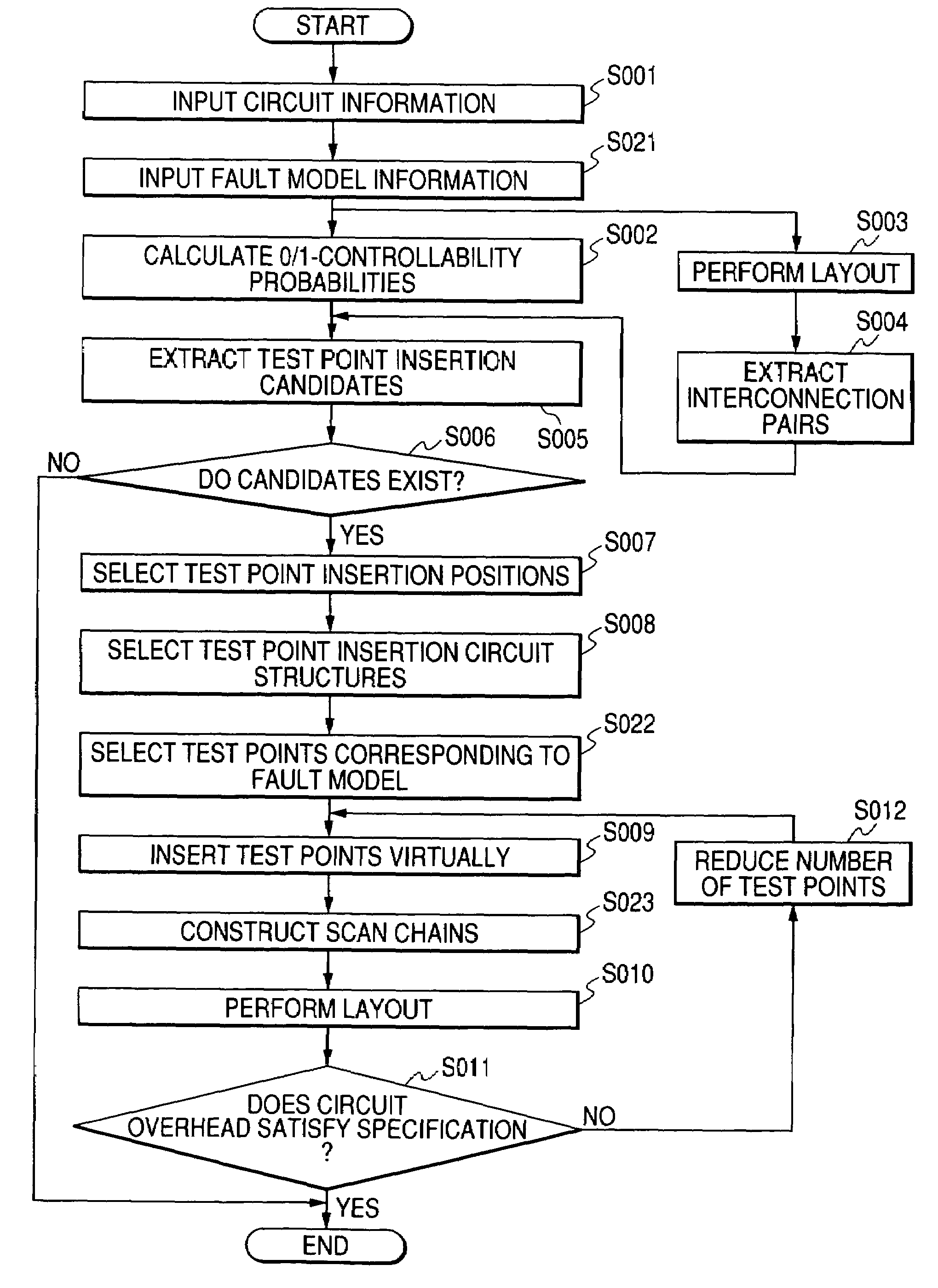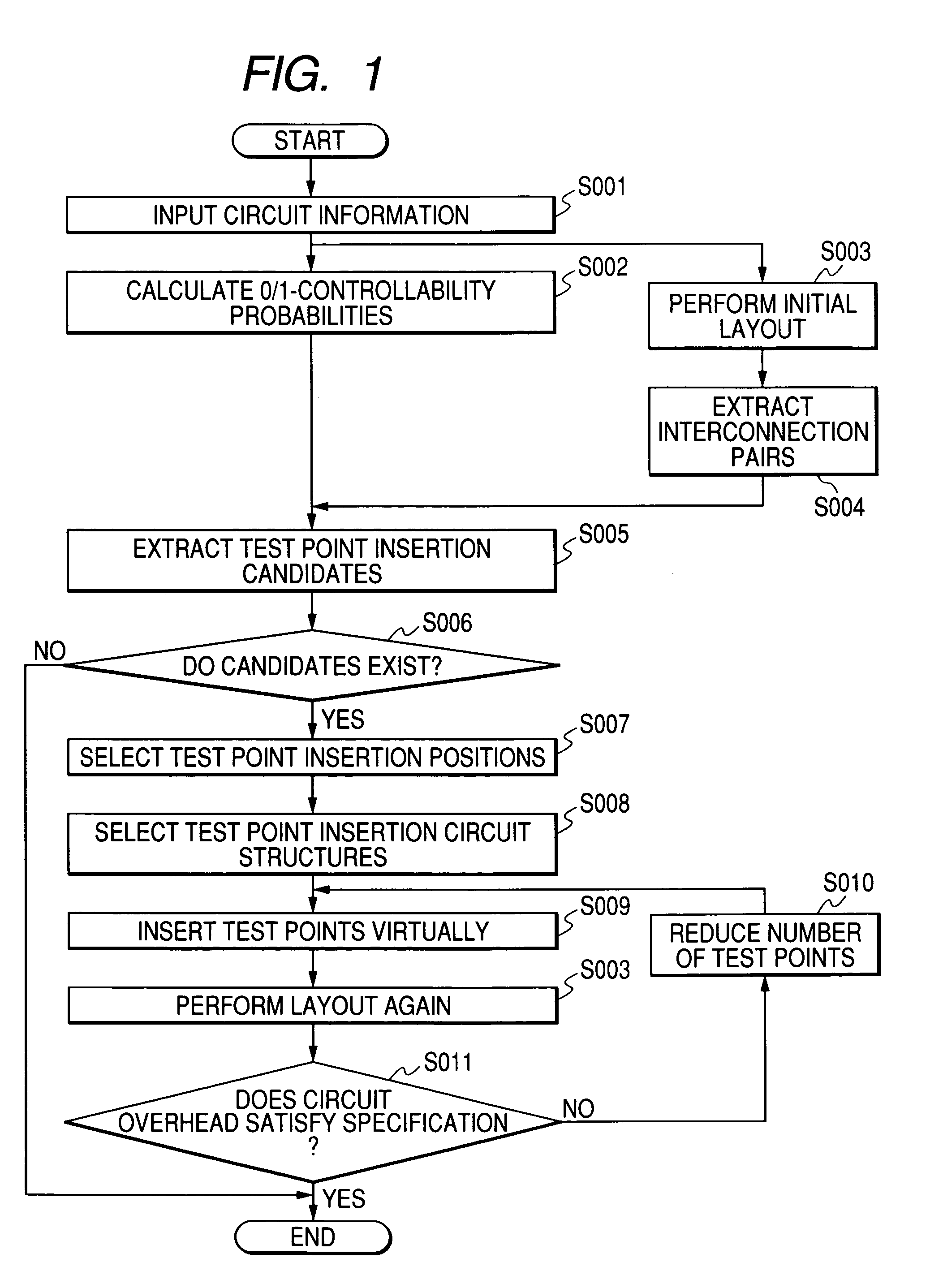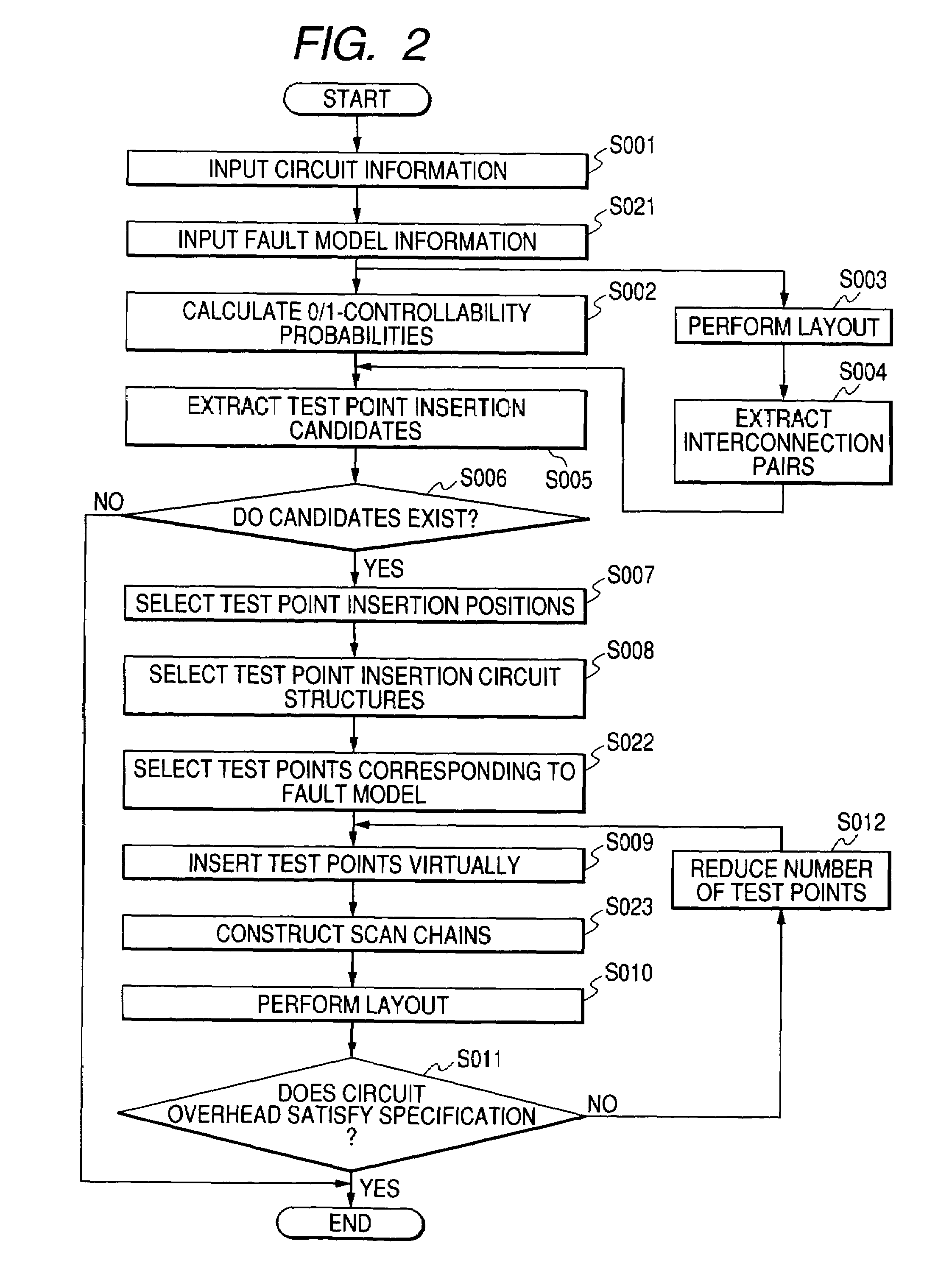Test circuit inserting method and apparatus for a semiconductor integrated circuit
a test circuit and integrated circuit technology, applied in error detection/correction, instruments, program control, etc., can solve the problems of increasing the chip size and the processing time for generating test patterns to achieve a desired fault coverage, so as to reduce the number of effective test points, increase the fault coverage of the entire chip, and reduce the effect of test points
- Summary
- Abstract
- Description
- Claims
- Application Information
AI Technical Summary
Benefits of technology
Problems solved by technology
Method used
Image
Examples
first embodiment
[0046]FIG. 1 is a flowchart of a process of a test circuit inserting method for a semiconductor integrated circuit according to a first embodiment of the present invention. As shown in FIG. 1, information of a subject circuit is input at step S001. At step S002, 0-controllability probabilities and 1-controllability probabilities are calculated for this circuit. Initial layout is performed on this circuit at step S003. At step S004, interconnection pairs where a problem may arise are extracted from a result of the initial layout.
[0047]Then, at step S005, test point insertion candidates are extracted by using the information obtained at steps S002 and S004. At step S006, it is checked whether the test point insertion candidates extracted at step S005 exist in terms of the configuration of the subject circuit. If it is judged as a result of the check that the candidates exist, test point insertion positions are selected at step S007 and test point insertion circuit structures are selec...
second embodiment
[0068]FIG. 2 is a flowchart of a process of a test circuit inserting method for a semiconductor integrated circuit according to a second embodiment of the invention. Steps in FIG. 2 having the same steps in FIG. 1 are given the same reference symbols as the latter and will not be described below.
[0069]In this embodiment, test points constitute scan chains. Further, to facilitate a defect analysis of a test result, fault model information is input in advance and the number of insertion positions of test points that are effective for the defect analysis is reduced in inserting test points. To this end, steps S021–S023 are added to the flowchart of FIG. 1.
[0070]As shown in FIG. 2, fault model information as a subject of analysis is input at step S021 immediately after circuit information is input at step S001. After circuit structures of test points to be inserted are selected by step S008 and the preceding steps, test points corresponding to the fault model that was set at step S021 a...
PUM
 Login to View More
Login to View More Abstract
Description
Claims
Application Information
 Login to View More
Login to View More - R&D
- Intellectual Property
- Life Sciences
- Materials
- Tech Scout
- Unparalleled Data Quality
- Higher Quality Content
- 60% Fewer Hallucinations
Browse by: Latest US Patents, China's latest patents, Technical Efficacy Thesaurus, Application Domain, Technology Topic, Popular Technical Reports.
© 2025 PatSnap. All rights reserved.Legal|Privacy policy|Modern Slavery Act Transparency Statement|Sitemap|About US| Contact US: help@patsnap.com



